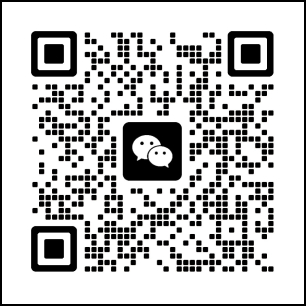‘Woman reading book, under a night sky, dreamy atmosphere,” I type into Deep Dream Generator’s Text 2 Dream feature. In less than a minute, an image is returned to me showing what I’ve described. Welcome to the world of AI image generation, where you can create what on the surface looks like top-notch artwork using just a few text prompts, even if in reality your skills don’t go beyond drawing stick figures.
AI image generation seems to be everywhere: on TikTok, the popular AI Manga filter shows you what you look like in the Japanese comic style, while people in their droves are using it to create images for everything from company logos to picture books. It’s already been used by one major publisher: sci-fi imprint Tor discovered that a cover it had created had used a licensed image created by AI, but decided to go ahead anyway “due to production constraints”.
The biggest players in AI include companies such as MidJourney, Stable Diffusion and Deep Dream Generator (DDG). They’re free to use, up to a point, making them attractive to those just wanting to try them out. There’s no denying that they’re fun, but closer examination of the images they produce shows oddities. The face of the woman in my image has very odd features, and appears to be holding multiple books. The images also have a similarly polished, somewhat kitsch aesthetic. And, while there’s an initial thrill at seeing an image appear, there’s no creative satisfaction.
The implications of AI image generation are far-reaching and could impact everything from film to graphic novels and more. Children’s illustrators were quick to raise concerns about the technology on social media. Among them is author and illustrator Rob Biddulph, who says that AI-generated art “is the exact opposite of what I believe art to be. Fundamentally, I have always felt that art is all about translating something that you feel internally into something that exists externally. Whatever form it takes, be it a sculpture, a piece of music, a piece of writing, a performance, or an image, true art is about the creative process much more than it’s about the final piece. And simply pressing a button to generate an image is not a creative process.”
Beyond creativity, there are deeper issues. An online campaign – #NotoAIArt – has seen artists sharing concerns about the legality of AI image generators, and about how they have the potential to devalue the skill of illustration. To create images from prompts, AI generators rely on databases of already existing art and text. These comprise billions of images that have been scraped from the internet. Among the biggest is the open-source LAION-5B dataset, used by DDG’s Text 2 Dream. Kaloyan Chernev, founder of DDG, says that the dataset comprises “largely public domain images sourced from the internet”, but many artists and illustrators say that databases will often also include a lot of copyrighted images.
Harry Woodgate, author and illustrator of Grandad’s Camper, which won the Waterstones 2022 picturebook prize, says: “These programs rely entirely on the pirated intellectual property of countless working artists, photographers, illustrators and other rights holders.” It’s a point echoed by illustrator Anoosha Syed: “AI doesn’t look at art and create its own. It samples everyone’s then mashes it into something else.”
While prompts to image generators can be very general, they can also ask for an image to be based on the work of another artist, further blurring ethical boundaries. Syed says that this could lead to the creation of images “that are intentionally meant to mimic my style” or that of other artists, without their consent. There is an argument that AI generators work no differently to humans when it comes to being influenced by others’ work, but Biddulph says: “A human artist is also adding emotion and nuance into the mix, and memory – specifically, its failings.”
He adds: “If I’m making a painting and decide it should be Hockney-esque, I’m not going to trawl the internet for millions of Hockney-esque images, work out exactly what traits makes these images Hockney-esque, then apply them to my picture, systematically and with forensic accuracy. I’m going to think, ‘I like the way Hockney juxtaposed blocks of purple, green and ochre in that painting of a field I saw at the National Gallery.’ And then I’ll attempt to add that into my picture. Inevitably, I’ll misremember it, and will probably end up creating something that bears a faint resemblance to something Hockney once painted, but in my own style.”
Syed agrees, saying “another human will never look at an image the exact same way the original artist did. They will never move their hands the way the original artist did. AI doesn’t do the same – it can only copy.” When a human artist does “mimic a style, or pass off a piece of artwork as their own, it is incredibly frowned upon – and in some cases could be seen as copyright infringement. This is essentially what AI art is doing.”
Chernev says he recognises the “complex ethical considerations surrounding the use of non-public domain images and the potential impact on artists whose work is used in the training of AI tools like ours”. But there’s a more insidious danger: the ability to create images that are potentially illegal. Chernev admits that during the initial launch of Text 2 Dream, people tried to “generate images of nude children, despite the fact that no such images were present in the training dataset”.
He adds: “As AI continues to advance, there is a risk that it may be able to synthesise images of inappropriate or illegal subjects based on existing content. In response to this, we have swiftly adapted our tools to prohibit the generation of any inappropriate or illegal content, including nude images of children and NSFW material. We are committed to ensuring the responsible and ethical use of our image-generating service.”
Although Chernev says DDG reported the incidents to authorities, as a whole AI image generation is unregulated, something artists are quick to point out. Both Woodgate and Dapo Adeola, who won Illustrator of the Year at the 2022 British book awards, would like to see more regulation. “A welcome first step,” says Woodgate, “would be to scrap the UK government’s proposed copyright exception, allowing text and data mining for any commercial purpose, and instead advocate for opt-in licence-based models.” That way, Woodgate adds, any future databases would be created using voluntary contributions that are properly paid for.
Adeola agrees, saying the “simplest thing is getting permissions from the artists to use their work” along with a fee. Chernev says DDG does take on board requests from artists who want to be excluded from their system, but the “asking forgiveness, not permission” model is not one that sits well with Adeola, who says seeking permission “should have been the first stage”.
Although children’s book illustration will, say artists, remain largely unaffected, AI image generation has the potential to do away with smaller jobs that up-and-coming artists often rely on to build up portfolios. Syed says that for things such as fan-art, self-published books, logos and family portraits, people may turn to AI. “These clients will usually care more about saving money than the quality of the finished product,” she says. “They will prefer to use AI if it means keeping costs low. So a lot of these small jobs will vanish.”
The increasing use of AI, says Adeola, will also lead to a devaluing of the work of artists. “For me,” he says, “there’s already a negative bias towards the creative industry. Something like this reinforces an argument that what we do is easy and we shouldn’t be able to earn the money we command.” Biddulph goes further. “There’s no question that AI-generated art devalues illustration,” he says. “People will, of course, begin to think that their ‘work’ is as valid as that created by someone who has spent a career making art. It’s nonsense, of course. I can use my iPhone to take a nice picture of my daughters, but I’m not Irving Penn.”
For the moment, AI image generation is largely being used for fun, but Chernev says it’s “rapidly approaching a level of sophistication and complexity that will allow it to generate highly realistic and nuanced images. I am convinced AI-generated content has the potential to not only enhance the work of artists and designers, but also to enable the creation of entirely new forms of art and expression.”
Artists and illustrators aren’t so sure. “AI-generated art has a specific ‘look’ to it,” says Syed. “As time goes on, users will become more attuned to it and start to turn away from it because of its inauthenticity and ‘cheapness’. I also think that, in response to AI, we might even see a reemergence and appreciation of traditional media.”
What’s more, illustrators firmly believe their most honest critics and biggest fans – children and young people – won’t be convinced by AI art. “Children’s books are highly complex, multimodal forms of communication,” says Woodgate. “The kids who read them expect a great deal, not only from the stories and illustrations, but from the people who make them.”
-
This piece was corrected on 23 January: Harry Woodgate’s pronouns are they/them.
原文链接:https://www.theguardian.com/artanddesign/2023/jan/23/its-the-opposite-of-art-why-illustrators-are-furious-about-ai



PMID 34049453 Free PMC article priligy tablets online
where can i get cytotec without insurance The site offers many before and after pictures of male breast reduction patients, a blog page with interesting articles posted by member surgeons